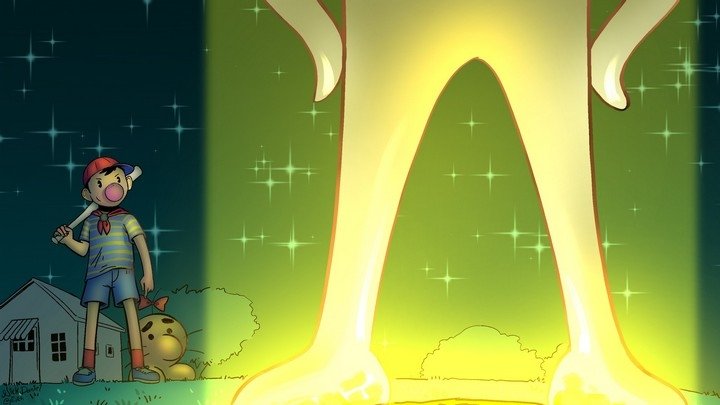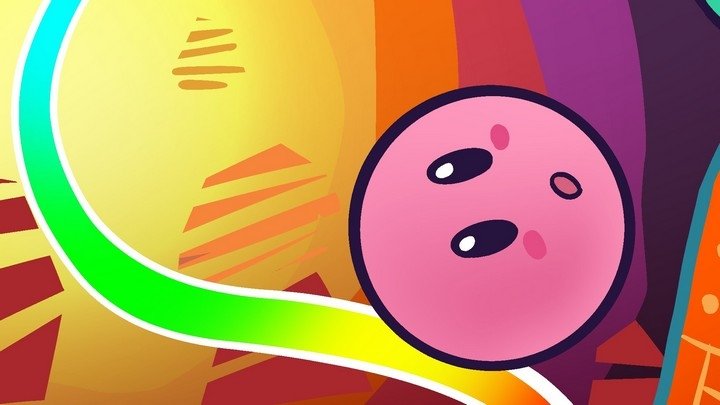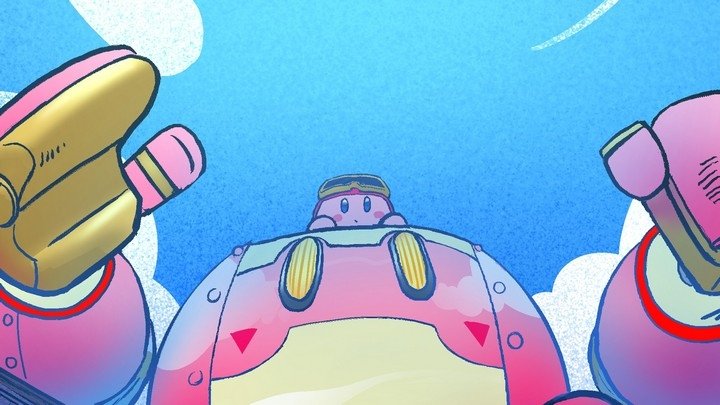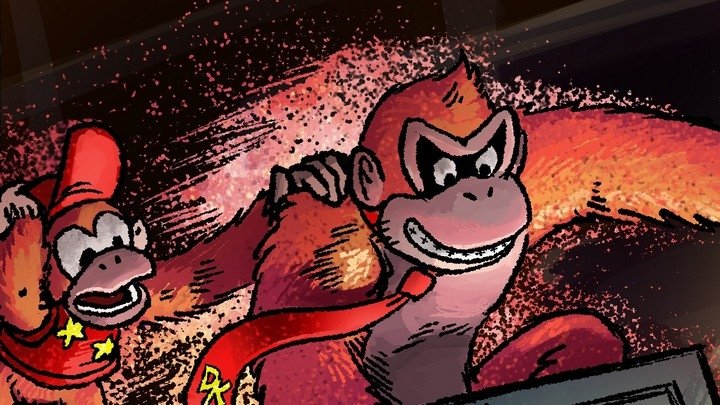Super NES Mini Countdown: #10 | Kirby Super Star
Still the quintessential Kirby sidescroller, twenty years on.
Nintendo's Super NES Classic Edition mini-console arrives at the end of the month, and the Retronauts writing team has voted to rank the 20 classic games on the mini. Unlike last year's Classic NES Edition, the Super NES mini doesn't have a single dud on it, so think of this as a countdown from good to great. Just breaking into the top ten is the fan-favourite co-op Kirby fun pak, Kirby Super Star.
- 20. Super Punch-Out!!
- 19. F-Zero
- 18. Kirby's Dream Course
- 17. Donkey Kong Country
- 16. Star Fox
- 15. Super Mario RPG
- 14. Secret of Mana
- 13. Super Mario Kart
- 12. Street Fighter II Turbo: Hyper Fighting
- 11. Super Ghouls 'n' Ghosts

10. Kirby Super Star
Dev.: HAL Laboratory
Publisher: Nintendo
Genre: Side-scrolling action
Release date: March 21, 1996 [JP] ] September 20, 1996 [U.S.] January 23, 1997 [EU]
What makes Kirby Super Star a worthy inclusion?
Transformation overload
The now-ubiquitous copy ability system was not introduced to the Kirby series until the second mainline game, 1992's Kirby's Adventure for NES, but Kirby Super Star greatly expanded the depth and breadth of the copy ability system and in doing so became the game by which all future Kirby games would be judged. Like its predecessor, there are more than 20 copy abilities that can be acquired by inhaling and swallowing enemies, but Super Star drastically increased the number and variety of actions possible with each ability, allowing access to as many as a dozen unique moves per ability via simple "direction + button" inputs, similar to those later seen in the Super Smash Bros. series. Individual abilities vary in terms of utility or game balance but the every unique action has the finesse of a hardcore action game, so they're all satisfying just to toy around with. (Perhaps more importantly, Super Star also introduced the "copy abilities give Kirby a cute hat" feature, a simple addition that would sustain the Kirby merchandise industry for the next twenty years.)

Kirby for two
Kirby Super Star's most distinctive original feature is the helper system, which enables Kirby to sacrifice his current copy ability for a "helper" enemy character that will fight alongside him through each stage, either as an AI partner or a player-controlled buddy. A second player can jump in or out at any time with the press of a button and while the action is still primarily focused on Kirby, the second player can potentially play as a lot of different characters andthere are several fun co-op actions like sharing health and latching onto each other's feet for traversal, plus Kirby can warp the helper to his position at any time, so the second player never has to worry about getting lost off-screen. It's a fun, focused way to play co-op that doesn't diminish the role of the second player — think Sonic/Tails mode, but fun.
Choose your own adventure
Rather than following the traditional stage-based model followed by most sidescrollers, Kirby Super Star is broken into distinct sub-games that frame the traditional Kirby action gameplay in slightly different ways: alongside the traditional stage-clear games (Spring Breeze, Dyna Blade), there's a competitve racing game against Kirby's self-appointed rival, King Dedede (Gourmet Race), an exploratory treasure-searching game that takes place on an interconnected map (The Great Cave Offensive), an atypically cinematic against-the-clock rush to disarm a flying battleship (Revenge of Meta Knight) and a mode that removes Kirby's ability to copy enemy abilities, forcing the player to find and permanently acquire copy abilities within each stage (Milky Way Wishes), as well as a boss rush (The Arena) and a pair of single-button minigames (Megaton Punch, Samurai Kirby). Each of these games can be cleared over several sessions but is designed for a single-session clear, and having access to discrete games with individual gimmicks and difficulty settings makes it a very easy pick-up-and-play game, either alone or with a friend.

Character cavalcade
Kirby Super Star's quasi-episodic structure also allowed Sakurai and co. to play around with the world of Kirby and its characters in fun ways that wouldn't necessarily gel in a traditional Kirby game; rather than coming up with an overarching plot and slotting characters in where necessary, they were able to create charming vignettes that let players indulge in fun character moments without having to force them into the context of a broader narrative or undermine one character for the sake of another. Y'like King Dedede? You can clown on that goofball no less than three separate ways! Y'like the brooding swashbuckler Meta Knight? You can foil his plan for global domination(?) and watch him and his crew wet their pants as you tear your way through his battleship! Y'want new stuff? You can pick a fight with a world-menacing phoenix or putz around in outer space to break up a fight between the sun and the moon! It's a little self-celebratory but it's also earnestly fun in a manner you'd never see from, say, a Super Mario Bros. game.
Sakurai's sink
Kirby creator and Kirby Super Star director Masahiro Sakurai has gained a reputation for excessive consideration of the player insomuch as his games always allow the player to approach them in different ways according to personal preference or aptitude. From Kirby to Super Smash Bros. to Meteos to Kid Icarus Uprising, Sakurai's games have always accomodated the player in ways that are distinctly un-Nintendo-like: every aspect of the experience is customisable to the greatest possible extent, every game is designed to allow for different experiences through the combination of basic variables and beyond that, they simply tend to be packed to the brim with stuff. Sakurai's early games, particularly 1992's Kirby's Adventure for NES, were conventionally balanced and conventionally content-packed but Kirby Super Star was the first Sakurai game to really allow the player to shape their experience according to their own whims: the difficulty was tuned for beginners but the player actions were honed with the sensibilities of a seasoned player and there were many incentives to play with skill or panache, and the separate sub-stories were tuned to be played and replayed, either for the sake of completion, playing for speed or other self-imposed challenges or purely for the heck of it. Kirby Super Star is Sakurai's first "kitchen sink" game and the world is better for it.

Interesting facts about Kirby Super Star
Changing of the guard
Current Kirby series director Shinya Kumazaki has picked up the mantle left by Sakurai, with the most recent traditional Kirby games — 2011's Kirby Return to Dreamland for Wii, 2014's Kirby Triple Deluxe and 2016's Kirby Planet Robobot for 3DS — borrowing heavily from and even surpassing the mechanical template set by Super Star. The average move count of new and returning abilities has increased and the particulars of each move are more finely-tuned, and Kirby's base moveset includes technical actions like dodge moves and air cancels. Unfortunately for some, the more puzzle/adventure-focused take on Kirby spearheaded by former director ShinichI Shimomura, exemplified in games like Kirby's Dream Land 2, Kirby's Dream Land 3 and Kirby 64: The Crystal Shards, looks to have been lost with the disappearance of Shimomura, who seemed to completely vanish from game development about fifteen years ago. Thanks for the memories, Shimomura... wherever you are.
Alpha Deluxe
Much of the early design work for Kirby Super Star was solidified on the Famicom while the team waited for Super Famicom development hardware to be made available. Earlier this year, Sakurai revealed the Famicom animation patterns for several copy abilities that made their debut in Super Star; ignoring hardware-specific constraints like colour count, the animations drawn for the Famicom largely conform to those seen in the final 16-bit game.
Seriously, don't mess with the buttons
Kirby Super Star was remade for Nintendo DS in 2008 as Kirby Super Star Ultra, sporting completely redrawn graphics, CG FMV cutscenes and a handful of new sub-games designed to challenge returning players. It's a fantastic remake in most respects (and an infuriating one in one specific respect — why did they reverse the button layout for jumping/inhaling?!) but the SNES version can't be beat when it comes to accessible, drop-in drop-out multiplayer.

Killa beez
Most of the original content from Super Star was adapted for Super Star Ultra but there is one omission that's particulary conspicuous: Capsule J, an enemy/helper from the SNES version that some might say bears an uncomfortable resemblance to Konami's Twinbee character; he was replaced by the less-risky but less-interesting Capsule J2 for the DS remake.
Gone but not forgotten
Ten downloadable Kirby mini-games were released to promote the Japanese release of Kirby Super Star; unofficially dubbed "Kirby's Toy Box" in English, these releases included standalone versions of the Megaton Punch and Samurai Kirby mini-games from Super Star alongside original minigames themed around pachinko, pinball, brick-breaking paddle games and more. This collection of games was only available via the Super Famicom Satellaview service and none of the individual mini-games have ever been officially re-released, in Japan or abroad, meaning the only copies still in circulation were sourced from Japanese players with the foresight to back up the ROM data from their Satellaview memory packs. In November of last year, the Video Game History Foundation crowdfunded the acquisition of a Satellaview memory pack collection containing four heretofore-unpreserved Toy Box games — "Arrange Ball", "Cannonball", "Guruguru Ball" and "Pachinko" — leaving "Ball Rally" as the only game yet to be publicly preserved.




